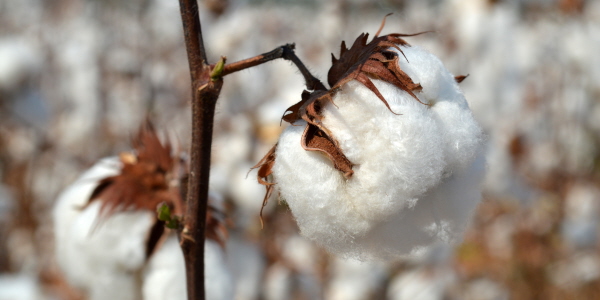[Publisher’s note: Supply risk is a beast that wears many suits. Today, we begin an exclusive three-part series that examines the problem of human trafficking in the global cotton supply chain.]
When people hear the term, human trafficking, they most likely think about the untold number of young women and children being abducted or lured away from their homes and sold into the global sex trade. But as we discovered in our conversations with a team of global experts, human trafficking is a very real risk to certain global supply chains too. In fact, there are many victims who are forced or lured into various parts of the cotton and textiles industries, usually in their native countries, where cheap labor helps to produce clothing that is distributed and sold globally. Collectively, profits from all forms of human trafficking are estimated to be $32 billion annually, although the problem is so murky that it is difficult to accurately estimate, particularly in the cotton and textile industries, where legitimate businesses knowingly or unknowingly leverage illegitimate sources in their supply chains.
To better understand how wide and deep the problem of human trafficking in the cotton and textiles industries is and to raise awareness of the issue, Stop the Traffik, a UK-based non-governmental organization (NGO), partnered with LexisNexis to study this issue. We read the report and then met with the report authors and the LexisNexis team to discuss their findings for this CPO Rising exclusive..
Stop The Traffik leveraged LexisNexis’s Human Trafficking Awareness (HTA) Index, a compendium of thousands of media articles covering global human trafficking, to analyze media coverage of known or suspected cases of child labor, forced (slave) labor, human trafficking, and or unsafe working conditions in the cotton and textile industry. Stop The Traffik looked at a sub-section of the HTA Index, more than 2,600 English-language articles from January 1, 2013 through March 31, 2014 regarding human trafficking in the industry, with 294 specifically mentioning cotton.
According to the report, cotton and textiles industry is worth over $1 trillion annual, accounts for 7% of annual world exports, and employs roughly 26 million people worldwide. And yet, as Stop The Traffik found, there is a lot of “dirty laundry” and “dirty money” flowing through these industries. The NGO found media coverage of human trafficking, child labor, forced labor, and or unsafe working conditions at each stage of the “seed to store” process – from planting cotton seeds, to harvesting cotton, to ginning, to spinning and weaving, finally to “cut, make, and trim” where finished products are made. At each stage of this process, workers are often forced to work long hours (12-20 hour days) under hazardous and or severe conditions and usually for substandard wages. Girls and young women, in particular, are four-to-five times more likely to be trafficked into the cotton and textiles industries because their labor is substantially cheaper than their male counterparts.
In many cases, children are the victims of bonded or debt labor where they are effectively sold into labor for a period of time by their parents, who use their children to pay back debts, or as is often the case in India, to raise money to pay for their daughters’ wedding dowries. These children are then forced to work under abusive and or unsafe conditions, without access to schooling, proper nutrition, healthcare, and for little or no pay. Young adults are also lured away from their villages to work in state-level or regional processing facilities, under the guise of legitimate employment. Many of the workers live where they work and are forced into confined and unsanitary living quarters. The report estimates that in nearly two-thirds of all cases, lump-some wages that were promised to these victims were not paid out after room and board deductions were taken.
The report estimates that the countries where the use of forced labor to harvest and produce cotton was most prevalent include India, China, Pakistan, Uzbekistan, and Kazakhstan. Indeed, in 2013, the Global Slavery Index ranked India “first in absolute terms of people being enslaved” and fourth in “prevalence of modern slavery.” Another noteworthy example is Uzbekistan, where in 2012, the Uzbek government reportedly forced more than a million of its own citizens – including teachers, nurses, and doctors – to harvest cotton “under abusive conditions on threat of punishment.”
Although Bangladesh is not among the ten countries with the highest media coverage in the LexisNexis HTA Index, it is the site of the deadliest accident in the history of the modern garment industry, which has caused retailers, consumers, and activists to consider the human cost of the cotton and textile industries. On April 24, 2013, the Rana Plaza Garment Factory collapsed, killing 1,129 workers and injuring 1,500 more. According to the report, this factory made clothing for major Western brands and retailers, including Benetton, J.C. Penney, and Wal-Mart – illustrating that both high-end and discount retailers, alike, leverage suppliers that have unsafe living and working conditions.
In our discussions, it became pretty clear that the problem of child labor, forced labor, human trafficking, and unsafe working conditions exist throughout the cotton and textiles industries and that various clothiers and retailers are potentially exposed. We’ll continue our review of the report and look at what Chief Procurement Officers and Supply Chain executives can do to better understand the issues and industries and take action to mitigate company and brand against these despicable, but not uncommon practices.
RELATED ARTICLES
Chief Procurement Officers in 2014: Procurement’s Convergence with Supply Risk Management
The Compliance Management Checklist, Part IV: Supply Risk Management
Skills for the Modern Procurement Pro – Supplier Performance Management
Skills for the Modern Procurement Pro – Supply Risk Management
Skills for the Modern Procurement Pro – Supply Market Knowledge



Pingback: Chief Procurement » Are You “Dressed to Kill?” Strategies to Mitigate Risk in the Global Cotton Supply Chain